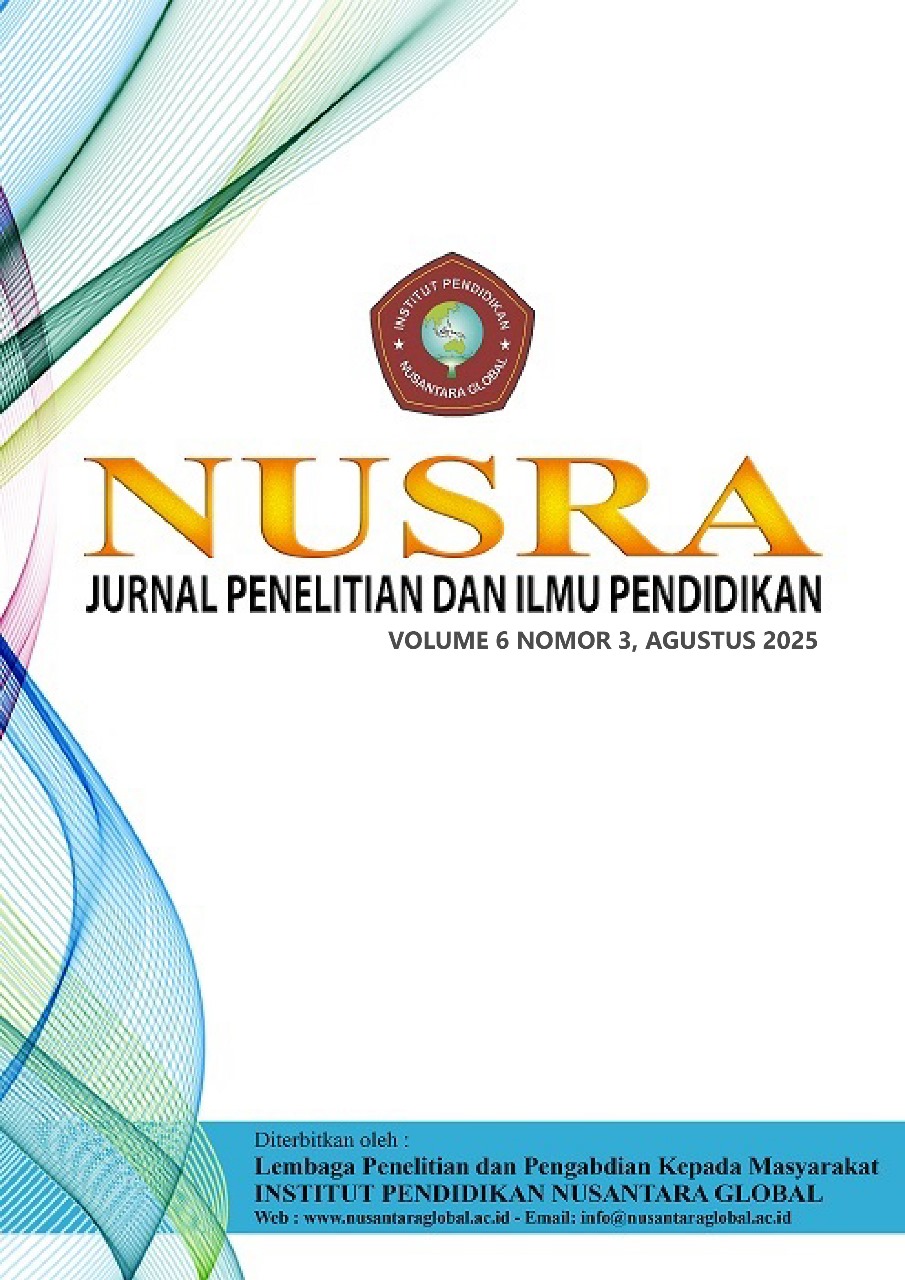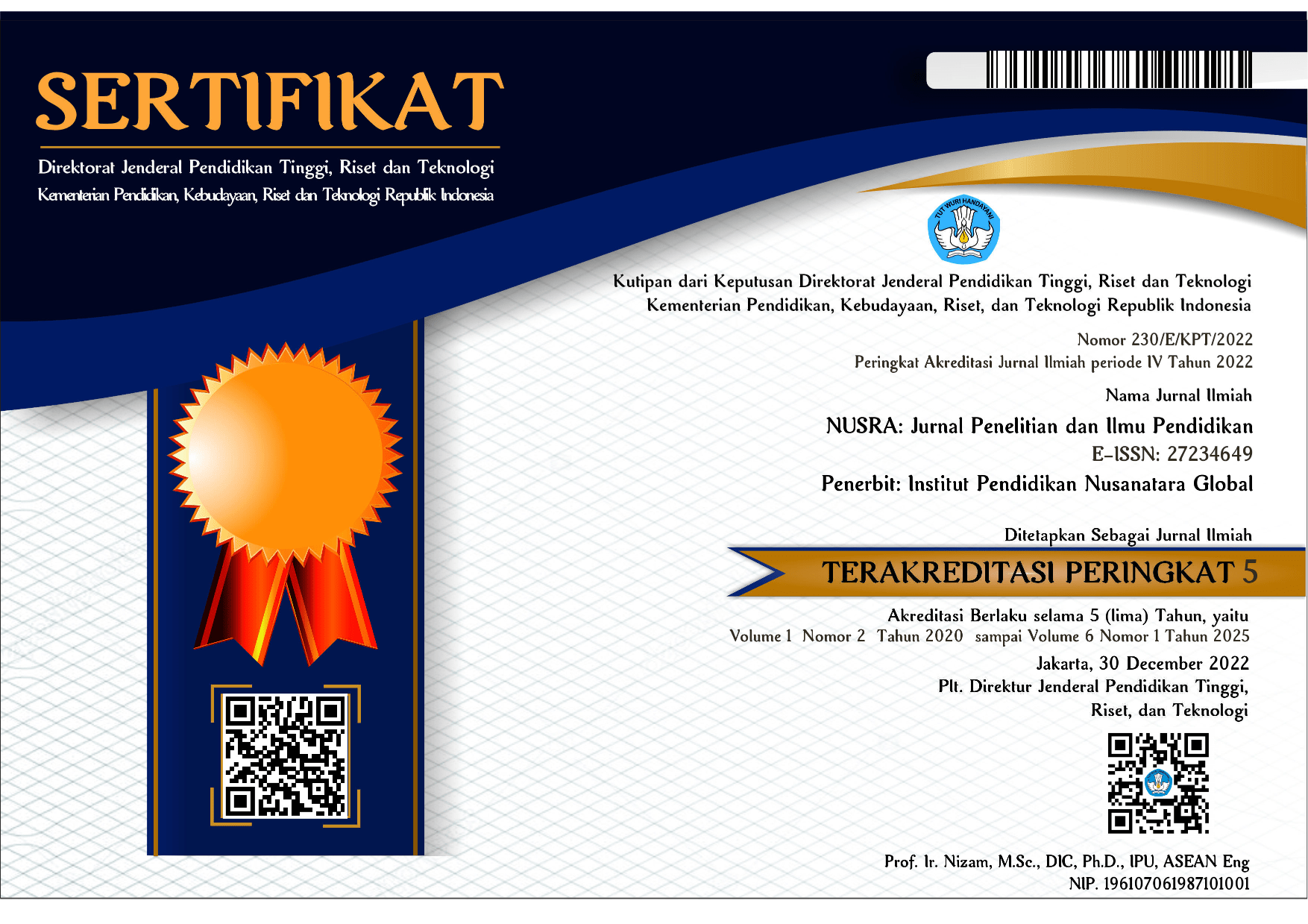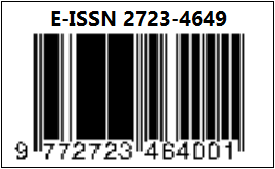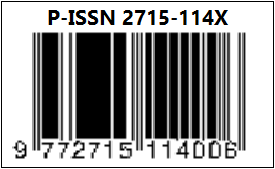Feasibility Assessment of A Nursing Learning E-Book Through Content and Media Expert Validation
DOI:
https://doi.org/10.55681/nusra.v6i3.3794Keywords:
Interactive E-Book, Nursing Education, Vocational Students, Content Validation, Media Evaluation, Digital Learning MaterialsAbstract
This study aims to evaluate the feasibility of using an e-book as a learning medium for students in the Nursing Vocational High School (SMK) program through validation by content and media experts. The research employed a descriptive quantitative method with a validation approach. Validation by content experts included assessments of content substance, language use, and material presentation structure, while validation by media experts assessed visual design, readability, and technical aspects of the e-book. Data were analyzed using a feasibility percentage formula. The validation results showed that the content expert assessment yielded a feasibility score of 60% (moderately good), while the media expert assessment reached 80% (good). Therefore, the e-book is deemed feasible for educational use with several recommended improvements. The novelty of this research lies in its application of a user-centered design approach, which is still rarely implemented within the context of vocational nursing education in Indonesia. Therefore, this thoroughly validated e-book may serve as a valuable reference for the development of effective and high-quality digital learning media in vocational education.
Downloads
References
Al‐Osaimi, D. N. (2024). The impact of digital learning on Saudi nursing students' engagement: A qualitative study. Nursing Open, 11(8), e2188. https://doi.org/10.1002/nop2.2188
Billings, D. M., & Halstead, J. A. (2015). Teaching in nursing: A guide for faculty. Elsevier Health Sciences.
Carrasco Aldunate, P., Pedrero, V., Reynaldos-Grandón, K., & Araya, A.-X. (2025). Validity and reliability of the Spanish version of the Self-Assessment Practice Scale for Students (SaPS). Nurse Education in Practice, 74, 104378. https://doi.org/10.1016/j.nepr.2025.104378
Clark, R. C., & Mayer, R. E. (2023). E-learning and the science of instruction: Proven guidelines for consumers and designers of multimedia learning. John Wiley & Sons.
Dewi, G. P. F. (2012). Pengembangan game edukasi pengenalan nama hewan dalam bahasa inggris sebagai media pembelajaran siswa SD berbasis Macromedia Flash. Universitas Negeri Yogyakarta.
Dhawan, S. (2020). Online Learning: A Panacea in the Time of COVID-19 Crisis. Journal of Educational Technology Systems, 49(1), 5–22. https://doi.org/10.1177/0047239520934018
Erarslan, A. (2021). Online Learning Experiences of University Students during COVID-19: Implications for Future Education. Educational Process: International Journal, 10(1), 7–20. https://doi.org/10.22521/edupij.2021.101.1
Ernawati, I. (2017). Uji kelayakan media pembelajaran interaktif pada mata pelajaran administrasi server. Elinvo (Electronics, Informatics, and Vocational Education), 2(2), 204-210.
Fumagalli, S., Torrenzano, G., Adami, A., Panzeri, M., De Lucia, A., Antolini, L., ... & Nespoli, A. (2025). Psychometric properties of the Italian version of the Secondary Traumatic Stress Scale (STSS-I) in midwifery students. Nurse Education in Practice, 74, 104342. https://doi.org/10.1016/j.nepr.2025.104342
Greene, J. W., & Coxhead, A. (2015). Academic vocabulary for middle school students. Research-Based Lists and Strategies for Key Content Areas.
Hanks, E., Hashimoto, B., & Egbert, J. (2024). The contracts word list: Integral vocabulary for reading and writing English contracts. English for Specific Purposes, 75, 37–48. https://doi.org/10.1016/j.esp.2024.03.002
Ivers, K. S., & Barron, A. E. (2010). Multimedia projects in education: Designing, producing, and assessing. Bloomsbury Publishing USA.
Knoch, U. (2014). Using subject specialists to validate an ESP rating scale: The case of the International Civil Aviation Organization (ICAO) rating scale. English for Specific Purposes, 33, 77–86. https://doi.org/10.1016/j.esp.2013.08.002
Hanks, E., Hashimoto, B., & Egbert, J. (2024). The contracts word list: Integral vocabulary for reading and writing English contracts. English for Specific Purposes, 75, 37–48. https://doi.org/10.1016/j.esp.2024.03.002
Knoch, U. (2014). Using subject specialists to validate an ESP rating scale: The case of the International Civil Aviation Organization (ICAO) rating scale. English for Specific Purposes, 33, 77–86. https://doi.org/10.1016/j.esp.2013.08.002
Lumley, T. (1998). Perceptions of Language-trained Raters and Occupational Experts in a Test of Occupational English Language Profficiency. English for Specific Purposes, 17(4), 347–367. https://doi.org/10.1016/S0889-4906(97)00016-1
Papp, I., Markkanen, M., & von Bonsdorff, M. (2003). Clinical environment as a learning environment: student nurses’ perceptions concerning clinical learning experiences. Nurse Education Today, 23(4), 262–268. https://doi.org/10.1016/S0260-6917(02)00185-5
Maulida, D. A., Jannah, S. S., Saktilia, Y. R., Sajidah, L. A., & Kamelia, F. (2024). Media Pembelajaran Digital di Sekolah Dasar: Pembelajaran Bahasa Indonesia di Era Merdeka Belajar. Cahya Ghani Recovery.
Mukurunge, E., Nyoni, C. N., & Hugo, L. (2024). Development and validation of a competency-based assessment approach in low-income settings. Nurse Education in Practice, 72, 104240. https://doi.org/10.1016/j.nepr.2024.104240
Papp, I., Markkanen, M., & von Bonsdorff, M. (2003). Clinical environment as a learning environment: student nurses’ perceptions concerning clinical learning experiences. Nurse Education Today, 23(4), 262–268. https://doi.org/10.1016/S0260-6917(02)00185-5
Putri, I. T., Aminoto, T., & Pujaningsih, F. B. (2020). Pengembangan e-modul fisika berbasis pendekatan saintifik pada materi teori kinetik gas. Edufisika: Jurnal Pendidikan Fisika, 5(1), 52–62.
Rahmani, Z., & Hikmawan, R. (2025). Pengembangan E-Modul Interaktif Pada Mata Pelajaran Matematika untuk Meningkatkan Kemampuan Berpikir Kritis Siswa Sekolah Dasar. Didaktika: Jurnal Kependidikan, 14(1), 743–756.
Rismayanti, R., Susilo, H., & Nurmiyati, N. (2022). Validasi Media Pembelajaran Digital Interaktif untuk Pendidikan Keperawatan. Jurnal Pendidikan Vokasi Kesehatan, 5(2), 110–119.
Rose, D. H., & Meyer, A. (2002). Teaching every student in the digital age: Universal design for learning. ASCD.
Wang, T. H., & Bai, H. (2016). Exploring the impact of the sequence of learning materials in a web-based environment. Educational Technology & Society, 19(1), 292–304.
Downloads
Published
How to Cite
Issue
Section
License
Copyright (c) 2025 Gusti Omkang Hingmane, Sisca Rahmadona

This work is licensed under a Creative Commons Attribution-ShareAlike 4.0 International License.














